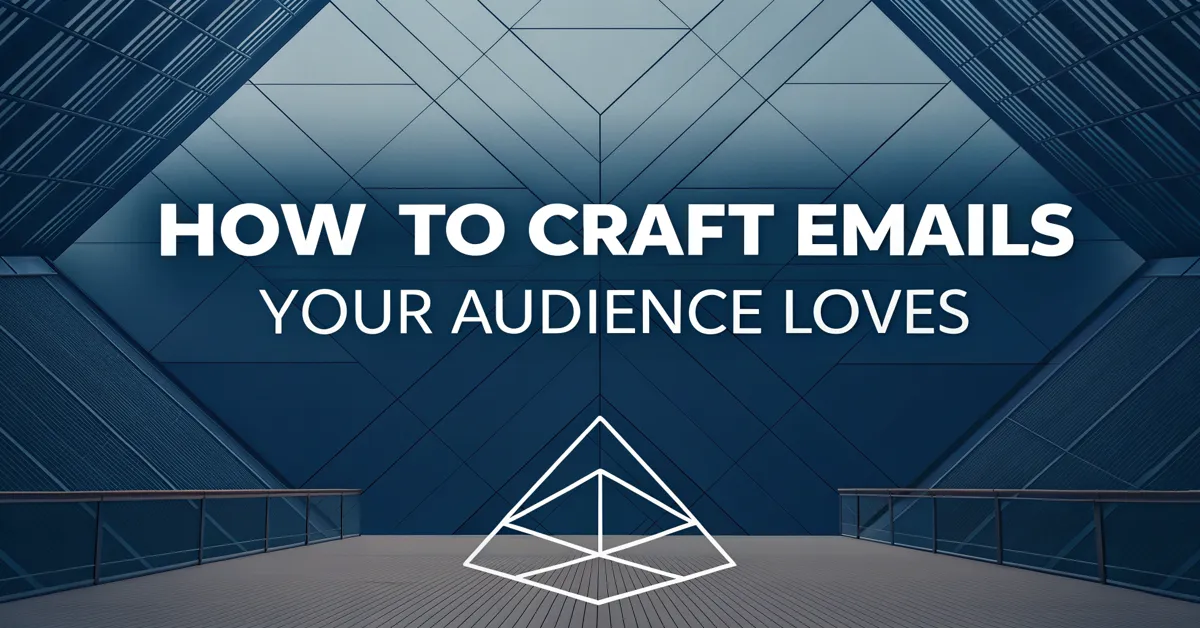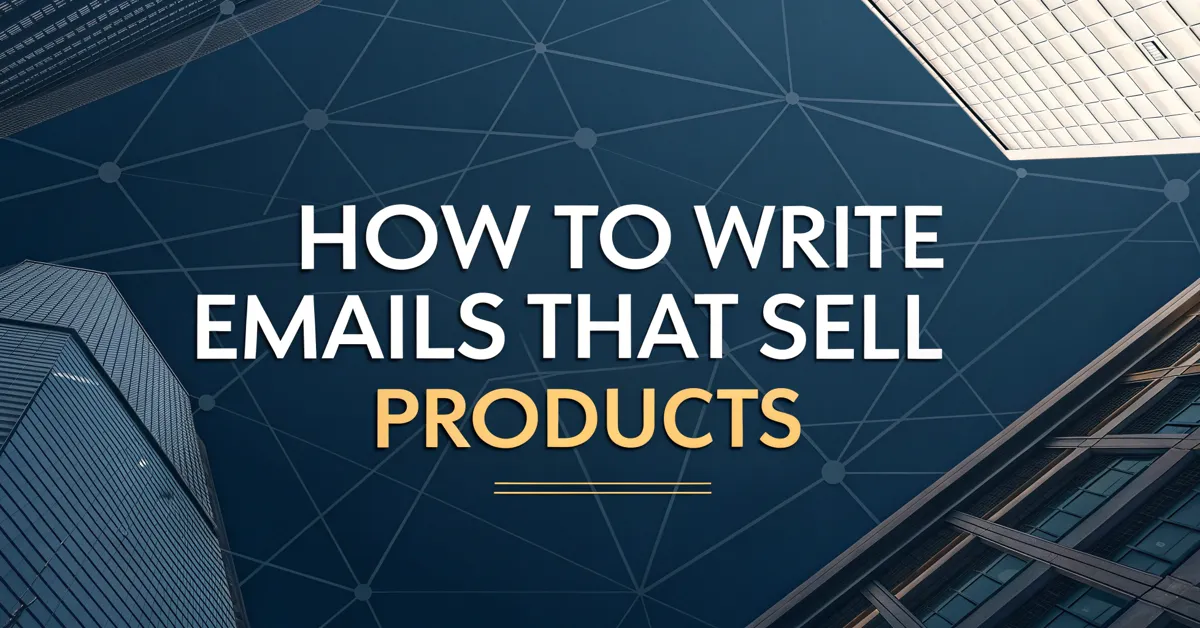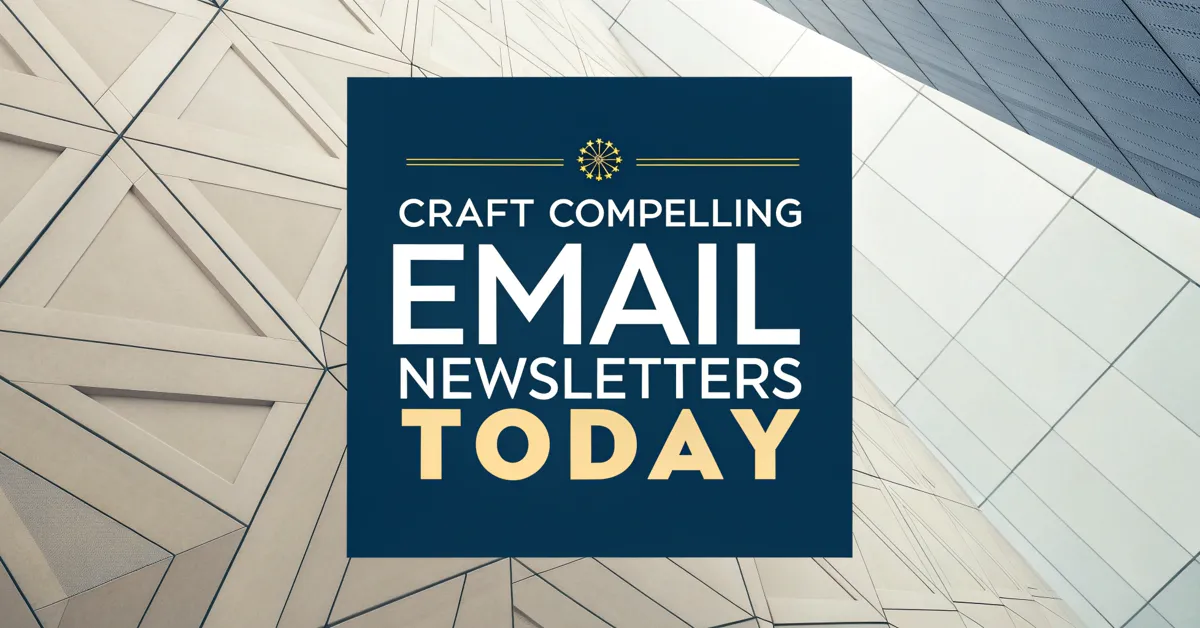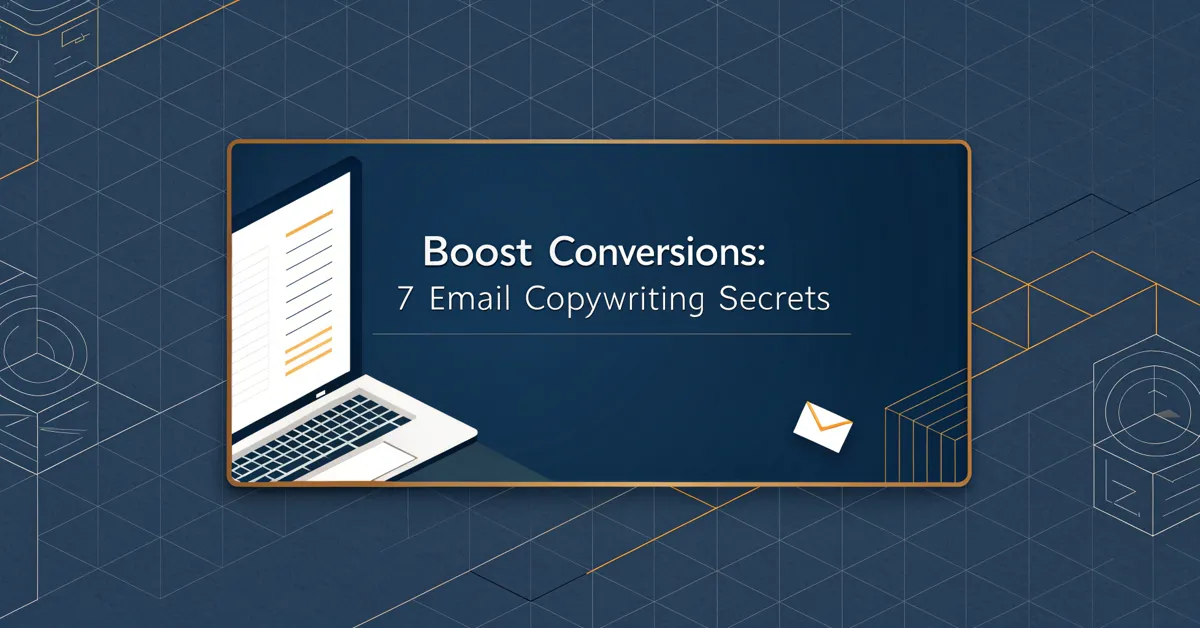Crafting email copy that truly connects with your audience can feel like a riddle wrapped in an enigma. You’ve likely seen emails that spark action, and those that fall flat. But what makes the difference? It’s not magic. It’s a deep grasp of what truly resonates with people. Knowing what clicks. And weaving this into your copy is key. In this article, we’ll show you the vital elements that make email copy great. We’ll look at it all, so you can make emails that work every single time.
What Exactly Makes Email Copy Great?
Great email copy is not just about words; it’s a careful mix of clear purpose and an understanding of your audience. It’s about making a connection. It is about the art of crafting messages that not only land in inboxes but also into the minds of your recipients. It’s about writing in a way that feels natural, that gets your idea across well, and that also brings in a good result. It means knowing how to write words that make people want to read, want to listen, and want to do what you’re asking them to do. It means knowing the right mix of what you’re saying, how you’re saying it, and who you’re saying it to.
The Core Elements
At its core, effective email copy has several key ingredients:
- Clarity: No one likes to decode a message. Great email copy speaks plainly. The purpose of the email is plain to see. Your words are easy to understand. There is no jargon.
- Relevance: Is the email something the reader needs to know about? Does it help them? Or is it some kind of random message? Great email copy talks to their needs. It also speaks about what is important to them.
- Compelling Call to Action (CTA): What do you want your readers to do? If you’re asking for a click, or a purchase, or even an answer, it should be very clear. A strong CTA guides them to the next move.
- Personalization: Do they feel like you see them as a real person? Or does your email read like a generic message? Great email copy feels like a one-on-one chat.
- Brevity: People have little time. A long email is more likely to get skipped than one that is straight to the point. Great email copy is short. It is also direct. It wastes no time.
- Value: What does the reader get from reading your email? This is more than just the offer. It’s the useful tips, the exclusive info, the sense that you truly care about their needs and wants. Great email copy shows what is in it for them.
Why These Elements Matter
Each of these points plays a key part in getting your email read and acted on. Clarity makes sure people know what your email is about. Relevance means they care about it. A clear call to action tells them what to do. Personalization makes them feel valued. Brevity keeps their interest. Value seals the deal. They all come together to make a good email.
Understanding Your Audience
Before a single word hits the page, it’s key to think about who you’re talking to. The best email copy speaks straight to the heart of its intended audience. It does this by knowing their wants, their needs, and how they speak. You have to know this audience if you want to write well for them.
Knowing Your Subscribers
Before you start, you need to take a good look at who is on your list. Ask questions such as:
- What are their demographics? What is their age, their job title, their place of living? It can be hard to know this exactly. But any data points can help.
- What are their pain points? What problems are they facing? What help do they need? Your email needs to address their problems head-on.
- What are their goals? What do they want to achieve? Is it more sales, less stress, or new skills? Understand what drives them. Then, match this in your email.
- How do they talk? What is their manner of speech? Are they casual or do they lean on formal language? Do they use more common words or a lot of jargon? Mirror the way they talk. You’ll earn their trust.
- What type of content do they like? Do they love data or a good story? Are they into very short emails, or more detailed ones? Do they prefer images over text? Match their needs.
Tools for Audience Research
If you have the data, use it. Look at what emails people open, what they click, and what they do when they get your message. You can also use surveys, or set up polls on your social media to learn more. There are even tools that you can use for more data on your list. Here are some that you might like:
- Email Analytics: Most email platforms have in-built tools to check open rates, click-through rates, and more. Use this info to see what type of content does well with your audience.
- Surveys and Polls: Tools such as SurveyMonkey, Typeform, and Google Forms help you make polls. Ask your readers about their needs, what type of messages they like, and what results they hope to see.
- Social Listening Tools: Platforms such as Brand24 and Mention can help you see what your audience talks about online. You’ll learn about their interests and get new ideas for your messages.
- CRM Systems: Platforms such as HubSpot, Salesforce, and Zoho can help you keep track of your audience. You’ll be able to see what they like, their past moves, and even send out more custom messages.
Tailoring Your Message
Once you have the info you need, you’re all set to make your messages. The goal is to make every email speak directly to the person reading it. A way to do this is with:
- Segmentation: Put your list into smaller groups based on interests, behaviors, or any other data point you have. It is much better to send emails that are relevant to a segment of your list, than it is to send a generic email to everyone.
- Personalization Tokens: Most email tools let you add data to each email, such as their name, or other info that can make the email sound personal.
- Dynamic Content: You can use specific content based on data points such as their past orders, or the pages they visited on your site. This can make the message feel more personal.
The Anatomy of Great Email Copy
The parts of your email matter. From the subject to the closing sentence, each piece plays a key part in the success of your message.
The Subject Line: Your First Impression
The subject line is the first thing people see in their inbox. And you’ll only have a few words to make your case. A good subject line grabs attention and makes the reader curious to open your email. Here’s what makes a subject line work:
- Urgency: Use words that create a need to know or act fast. But use it with care, so it does not come off as spam. “Last Day,” or “Limited Time” are good examples of how to make people want to open the email.
- Curiosity: Ask a question or leave the reader wanting more. “Did you see this?” or, “You’ll never guess what…” are great ways to make them want to open your email to see more.
- Personalization: Use their name or something else that makes it feel as if you’re talking to them. A simple way to personalize your email is to add “Hey [name],” at the start.
- Value-Driven: Tell them what they’ll get when they open your email. “Three Tips to Make…” or, “Free guide to…” are ways to get them to click.
- Brevity: Keep the subject line short. Most people check their mail on a phone. So it should be short enough that it can be read easily.
The Opening: Hook Them In
The start of your email is the next big test. This part needs to make good on the promise of your subject line. Your opening needs to grab their interest and make them want to read on. Here’s what makes for a great opening:
- Directly Address Them: Start with something that feels personal, such as “Hi [name],” to get a conversation-like tone from the start.
- State the Point: Let them know right away why you’re writing to them. It will save them time and effort.
- Create a Connection: Show that you know their needs and wants. Then make your offer feel right for them.
- Intrigue: Start with a question or a statement that makes them want to read more.
The Body: Keep Them Reading
The body of your email should give all the info your reader needs in a way that is both clear and useful. Here’s how to make sure the body of your email works:
- Clear Sections: Break your text into small parts with clear subheadings. This will make the email easier to read.
- Short Paragraphs: Use small paragraphs, one idea in each, to make the text less overwhelming.
- Bold Words: Use bold to stress key points. Or to guide the eye to the parts that matter most.
- Use Lists: Lists are easier to read. You can use them for tips, features, or steps.
- Make it Personal: Use personal words like “you” to make the email more engaging.
- Show the Value: Make sure you are always highlighting what’s in it for them. What will they gain by reading or by clicking?
- Use Storytelling: If the email allows, use a quick story to make a good point.
- Stay on Point: Only include things that help the reader. Do not add things that are not useful.
The Call to Action: Guide Them Forward
The call to action (CTA) tells the reader what you want them to do. Make it clear, compelling, and easy to find. Here are some key points to think about:
- Clear Wording: Use strong, clear words that show the action. “Buy Now,” or “Learn More” are great examples of clear CTAs.
- Placement: Put your CTA in a place where it’s easy to see. Usually near the end of the email, or in more than one spot.
- Use Buttons: Buttons stand out. They make it easy for people to tap on them on any device.
- Visual Appeal: Make sure the button or link is easy to click. Try using colors that stand out.
- Use Numbers: Numbers can really make a point. “Get 30% off,” is a better CTA than simply writing “Get a discount.”
- Sense of Urgency: Words like “Now” or “Today” can make readers feel the need to act fast.
The Closing: Leave a Lasting Mark
The closing of your email is a chance to leave a good impression and cement the relationship with your reader. A good close should make the reader feel valued. It should also show thanks for their time. Here’s how to end strong:
- Thank Them: Always thank them for taking the time to read your email.
- Add Value: Reiterate why the reader should act. And what they will gain from doing so.
- Keep it Personal: Close with a personal touch, such as “Best,” or, “Thanks,” to show that you care.
- Make it Easy to Reach You: Let them know how they can get in touch with questions or feedback.
Writing Compelling Copy: The How-To
Now that we’ve gone through the parts of an email, it’s time to talk about the writing itself. The words you use can make all the difference.
Using Simple Language
Clear and plain language is key to good emails. It makes sure the message is easy to grasp. Think of writing for a normal person. Avoid complex jargon or long words that can throw your reader off. The goal is to make your emails as easy as possible to read.
- Shorter Sentences: Write short, direct sentences. These are easier to read and understand.
- Common Words: Use words people use every day. Do not use overly formal words.
- Active Voice: Use active voice for a more clear and direct message. For example, instead of writing “The product was bought by him,” try using “He bought the product.”
- Avoid Clichés: Stay away from common phrases. Use words that make your writing sound fresh and real.
- No Jargon: If you must use terms that might not be known to the reader, then always explain them in clear ways.
Creating a Sense of Urgency
Creating a sense of urgency can get readers to act. You can do this by using words that show your offer will not be around for long. Here’s how:
- Limited Time: Say that your offer is only good for a small time, such as a day, or a week.
- Limited Stock: Tell them that there are only a few items left.
- Exclusive Deals: Highlight that only those in your list are getting this offer.
- Use Words that Imply Urgency: Words such as “Now,” “Hurry,” or “Don’t Wait,” can make them feel the need to act now.
- Countdown: If your email is time based, include a countdown timer in the email to show the time they have to act.
Show, Don’t Just Tell
Instead of only talking about the value of your offer, show them what they will get. People often respond better to real results than just general info. Here are some things you can do:
- Use Examples: Give real cases where your product or service has worked for others.
- Real Numbers: Share data, stats, and results to add proof to your offer.
- Testimonials: Show quotes from users that prove the value of what you have.
- Stories: Use a short story to show how your offer fixed a common problem that they might have.
- Before and After: If you can show the difference that your product or service has had, it’s a great way to make a lasting impact.
Keeping it Personal
People respond better to emails that feel like they are meant for them. Here’s how to make your email feel more personal:
- Use Names: Use the name of your reader throughout the email.
- Use “You” Focus on their needs, not yours. Make it about the reader.
- Speak to their Needs: Talk to what you know about their past actions or interests.
- Ask Questions: Ask questions that make them feel like you know who they are, what they need, and what they hope to achieve.
- Use a Friendly Tone: Write as if you’re talking to a friend. Be real, be open, and be kind.
Testing and Optimization
No matter how great your copy is, there is always room to grow. The key to success is to constantly test and refine your emails. This is where the data comes in.
A/B Testing
A/B testing lets you test two different versions of your email to see which performs better. This means changing only one thing at a time. You can test:
- Subject Lines: Try different wordings, or different lengths.
- Openings: Test different ways to start the email.
- CTAs: Try different words or button colors.
- Body Copy: Test different ways of talking, or even how long the email is.
- Images: Test different types of images or videos in your emails.
Tracking Key Metrics
To know what works, you need to track some key metrics:
- Open Rate: This shows how many people opened your email. If you have low numbers, test your subject lines.
- Click-Through Rate (CTR): This is the number of people that clicked on a link in your email. Use it to test placement, wording, and call to action buttons.
- Conversion Rate: This shows you how many people did what you asked them to do. Such as making a purchase, or signing up for something. It shows how well your email is at moving readers to action.
- Unsubscribe Rate: If a lot of people are leaving your list, then you might be sending emails that are too frequent, that are not relevant, or that have no value.
- Bounce Rate: This shows how many emails were not sent. If the rate is too high, then you need to test the email address of your list, to remove any broken emails.
- Time on Page: This one tracks how long people stay on the pages that you link to in your email. Low numbers mean the reader lost interest in your offer.
Iterating Based on Data
Use the data you gather from testing to make more informed decisions. Keep doing what works, and fix what doesn’t.
- Analyze: Look closely at the data to find trends and patterns.
- Hypothesize: Make a guess on why certain emails work better than others.
- Test: Make changes based on your guesses. Then, see how the next test performs.
- Refine: Keep making changes and testing. Always aim to get better results.
Ethical Considerations
As you craft your emails, keep ethics in mind. Never send emails that are not fair or that might trick your readers. Building trust with your list is key to long-term success.
Respecting Privacy
Always respect the privacy of your readers:
- Get Consent: Only send emails to those who have said they want to receive them.
- Easy to Unsubscribe: Make it simple for people to leave your list.
- Protect Their Data: Take steps to make sure the info of your list is safe.
Truth in Advertising
Be honest in your emails:
- Real Offers: Never fake an offer or try to trick the reader.
- True Benefits: Make sure you can stand behind your offers.
- No False Claims: Do not make promises that you can’t keep.
Building Trust
Focus on building real trust:
- Be Real: Write with a real voice.
- Be Consistent: Send emails that are fair and relevant.
- Be Open: Talk with your readers about what they want. And make adjustments based on what they say.
The Future of Email Copy
The world of email is always changing. New tech, new tools, and new habits all shape what works now. But the basis of good email writing will stay the same: clear, honest, and human.
AI and Email
AI is starting to play a bigger role in email copy, from making subject lines to even writing full emails. Tools such as Jasper and Copy.ai can speed up your process. But, you need to use them wisely. You also need to make sure the content you make with AI feels true to your brand and speaks with your real voice.
Personalization at Scale
As tech grows, the move towards more personal emails will only get stronger. You’ll soon be able to make truly personalized content for your readers, based on their data, and past actions. This will make the email experience better for everyone.
The Human Touch
While new tools will change how we write emails, the need for a human voice will remain. At the heart of all this tech, real human connections will still be what counts the most. Being real, being kind, and caring for your readers will always get a good result.
Making Email Copy That Truly Connects
Creating email copy that truly connects with your readers takes time, effort, and testing. But when you do, you can move your readers to action. By being clear, being relevant, and keeping your readers in mind, you can turn your emails into a powerful way to grow your business. Now you know what you need to make your emails work every single time.
Is Your Email Copy Ready For Take-Off?
You’ve read a great deal about what it takes to write winning email copy, from understanding your audience to the power of clear and concise words. But reading about it is not the same as putting your knowledge to work. The true measure of your ability to write great email copy will be the way that you apply all you’ve learned to craft emails that connect with your readers. Start putting your knowledge to the test. Experiment with different styles, play around with different calls to action, and track the results with the use of data, to find what truly moves your readers. As you move ahead, remember that the most important goal of your emails is to make real connections with those who choose to open them. Are you ready to make some emails that truly make a difference?





